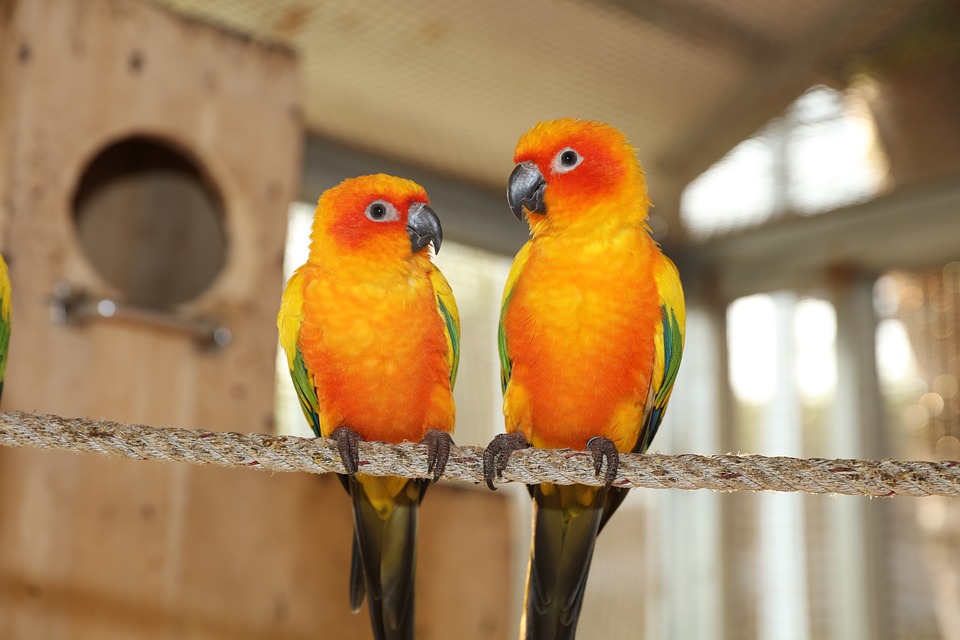Header 1: Introducing the Parrot Training Zone
Parrot training requires a dedicated space where your feathered friend can focus and learn without any distractions. In this article, we will guide you through the process of creating a parrot training zone that promotes effective training sessions. By implementing these strategies, you can optimize your parrot’s learning experience and strengthen your bond with your beloved pet.
Header 2: Selecting the Perfect Location
Finding the right location for your parrot’s training zone is crucial. Consider the following factors when choosing an area:
2.1 Quiet and Peaceful Environment
Ensure your parrot’s training zone is away from loud noises, such as TVs or appliances. Parrots are easily distracted, and a calm environment will help them concentrate during training.
2.2 Natural Lighting
Natural lighting is beneficial for both parrot and trainer. It promotes a positive atmosphere and allows your parrot to perceive visual cues accurately. Place the training area near a window or use full-spectrum lighting to mimic natural sunlight.
2.3 Temperature Control
Maintain a consistent temperature within the training zone to keep your parrot comfortable. Extreme temperatures can affect your parrot’s focus and willingness to engage in training activities.
Header 3: Creating a Distraction-Free Environment
To maximize your parrot’s training potential, it’s essential to minimize distractions within their training zone. Follow these steps to create a distraction-free environment:
3.1 Remove Electronic Devices
Keep electronic devices, such as smartphones or tablets, out of the training area. These devices can divert your attention and disrupt the training session.
3.2 Clear the Surrounding Area
Remove any clutter, toys, or objects that may divert your parrot’s attention during training. A clean and organized training zone helps your parrot focus solely on the training exercises.
3.3 Limit Visual Distractions
Cover windows or use curtains to minimize visual distractions that may capture your parrot’s attention. This ensures their focus remains solely on you and the training activities.
Header 4: Designing an Engaging Training Zone
A well-designed training zone can stimulate your parrot’s curiosity and eagerness to learn. Consider the following tips:
4.1 Providing Interactive Toys and Perches
Include a variety of interactive toys and perches within the training zone. These items provide mental stimulation and encourage your parrot to explore and engage in learning activities.
4.2 Incorporating Positive Reinforcement
Ensure your training zone has a designated area for treats and rewards. This reinforces positive behavior and encourages your parrot to actively participate in training sessions.
4.3 Utilizing Target Sticks and Clickers
Incorporate target sticks and clickers within the training zone to aid in teaching new behaviors and commands. These tools allow for clear communication and help establish a stronger bond between you and your parrot.
Header 5: Frequently Asked Questions (FAQs)
Q1: How long should each training session be?
A1: Training sessions should be kept short, around 10-15 minutes, to maintain your parrot’s interest and prevent fatigue.
Q2: Can I use food as a training reward?
A2: Absolutely! Food rewards are highly effective in parrot training. Ensure the treats are healthy and appropriate for your parrot’s diet.
Q3: How often should I conduct training sessions?
A3: Consistency is key. Aim for daily training sessions to reinforce learning and maintain progress. However, always consider your parrot’s energy levels and avoid overwhelming them.
Q4: What if my parrot gets distracted during training despite creating a distraction-free zone?
A4: Distractions can still occur, especially if your parrot is new to training. Remain patient and gradually increase the level of distractions as your parrot becomes more comfortable and focused.
Creating a parrot training zone free from distractions is essential to ensure successful training sessions. By carefully selecting the location, minimizing distractions, and designing an engaging environment, you can create an optimal training zone that promotes effective learning and strengthens your bond with your parrot. Happy training!









